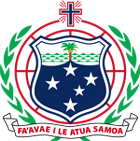The Samoa Bureau of Statistics (SBS) reached another milestone yesterday with the launching of five official publications and a website. The ceremony was attended by Government representatives, members of the Diplomatic Corps and the public.
Associate Minister for the Ministry of Public Enterprises, Susuga Papalii Niko Lee Hang delivered the keynote address.
“We hope that policy makers, planners, donor partners, researchers as well as education institutions will find these published reports and data useful to make evidence-based decisions for the betterment of Samoa and to enhance and improve populations and health developments in the future.
“We also hope that the education institutions and our school children will find the atlas report and the website tool very useful for their research work,” said Papalii.
The Associate Minister said the most important part is the achievement of the delivery of three milestones which include:
- Samoa Demographic Health Survey Report 2014 which is a follow up of the 2009 survey and has collated the latest information on population housing and household characteristics, material and child health, nutrition, fertility and family planning, HIV AIDS and TB knowledge and attitudes, smoking, alcohol consumption, and it also collected selected gender information;
- Samoa Socio-Economic Atlas Report 2011 and the three printed census reports which provide a series of population and household information which reflected the demographic trends and changes pertaining to population and developments over the last 15 years or since the beginning of 2000;
- Website online tabulation and mapping using REDATAM is a tool that can help the user who will visit the SBS’s website to generate tables, graphs or maps of Samoa using the 2011 census results.The other publications launched today were the Population and Housing Census Report 2011 (reprint with ISBN); Population and Housing Census Report 2006 (reprint with ISBN); and the Population and Housing Census Report 2001 (reprint with ISBN).According to Papalii, the success of this work is the result of partnerships between Government, Nuanua o le Alofa and donor partners that include UNFPA Pacific, UNICEF Pacific and the Government of Australia.

